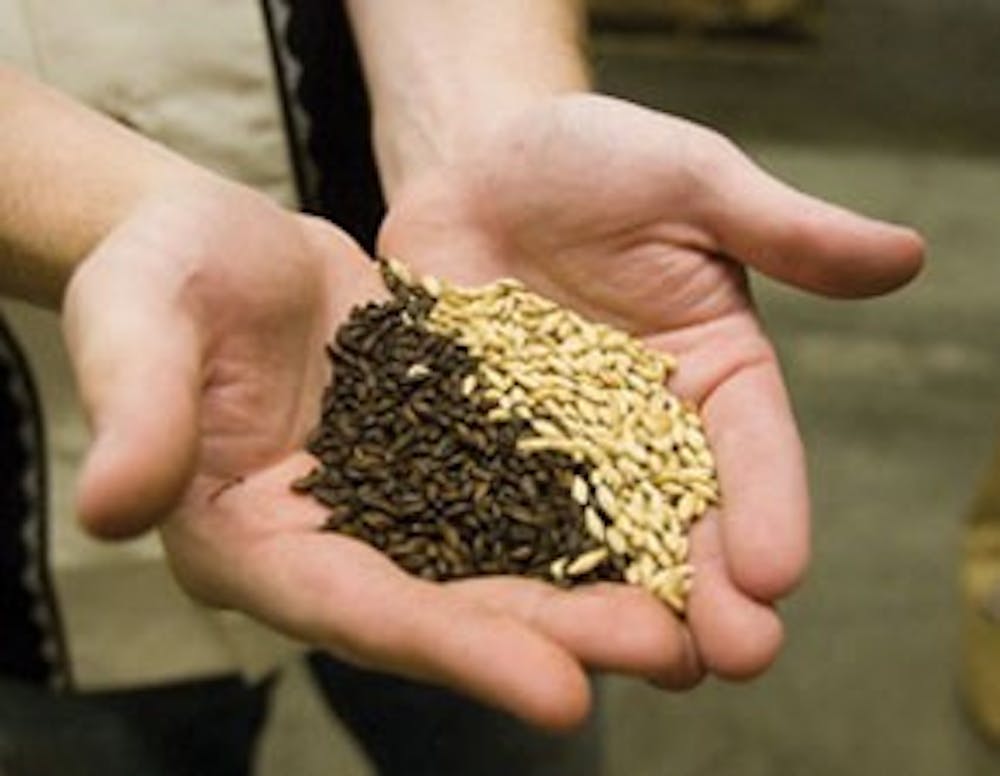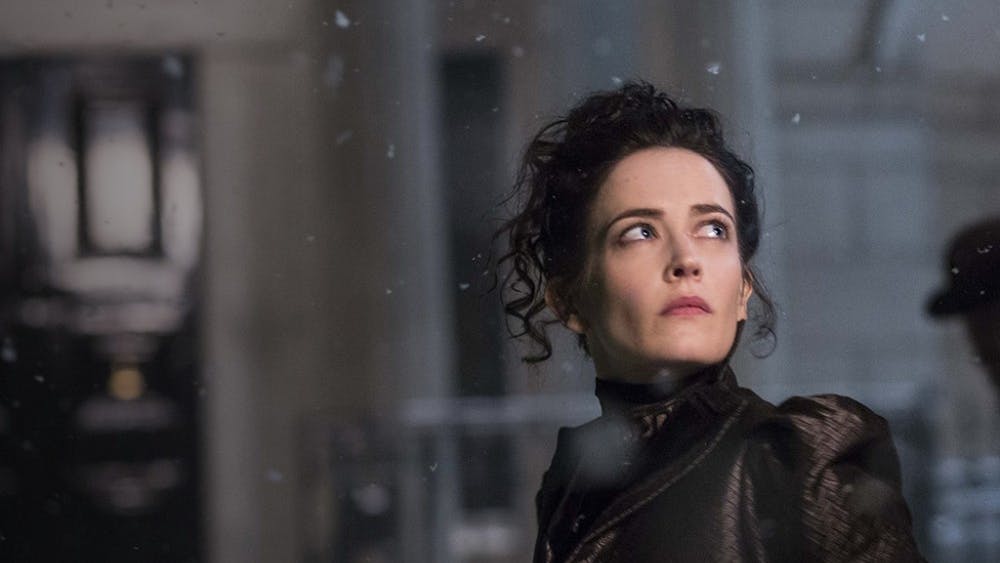1. Barley \nAll beer starts with the barley, or malt. All malt is toasted in a kiln. This is done so the grain can create enzymes that are not in the malt naturally. On the right is Pale Ale malt. This is what Upland uses as their base-malt and is the type used in Upland Wheat. On the right is Chocolate malt, which starts out the same as the Pale Ale malt but is kilned longer. The longer roast brings about different flavors and colors in the malt. Chocolate malt is used in Stouts and Porters.
2. Brew Process\nThe malt and hot water are mixed in the mash tun. The solid malt is then separated from the liquid, or the wort, and is pumped into the kettle. The wort is brought to a boil in The Kettle, and hops are added. Then the wort goes through a heat exchanger, where it is cooled and yeast slurry is added. It then sits in the fermenter until the beer is completely fermented. Yeast is pulled off the beer, Upland Wheat then goes to the Bright Beer tank, where the proper carbonation is met.
\n3. Bottling Proces\nThe beer is moved directly out of the Bright Beer Tank to the bottling line. It's moved by head pressure through a sanitary hose. Beer is pumped into six bottles at a time. The caps are pressed on and the labels wrapped around the bottles. The bottling line produces 30 bottles a minute. After bottled, Upland keeps the beer in a walk-in cooler until it's time to distribute it. Upland Brewery distributes to all 92 counties in the state of Indiana.
\n4. Consumption\nWheat malt and grain contain lots of proteins. When drinking Upland Wheat Ale from the bottle, roll the bottle on the table, because those proteins have settled to the bottom. Pour the beer into a glass with two pours for the best possible taste. Then, garnish the glass with an orange slice. This is done to heighten the citrus flavor of the orange peel that was added during the brewing processes. Above: Head Brewer Caleb Staton enjoys a pint of Bad Elmer's Porter.






